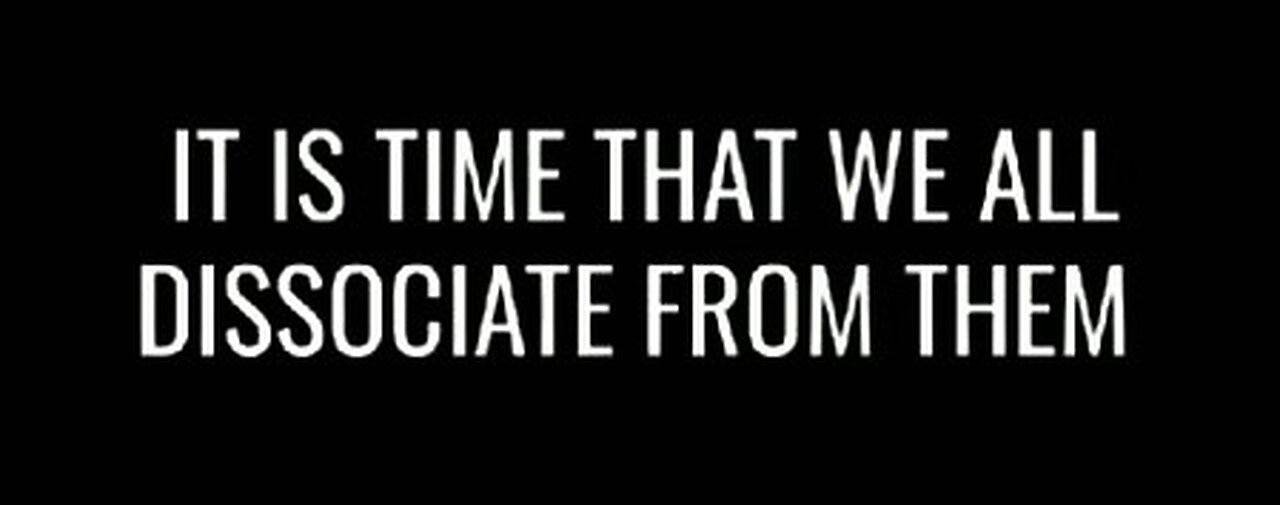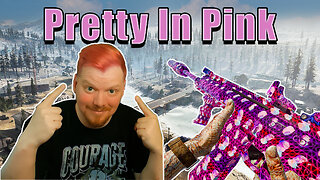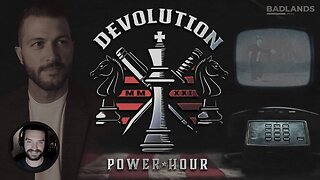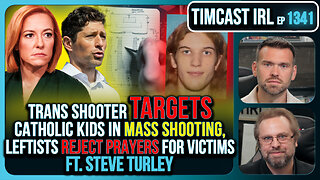Premium Only Content

Why Pedophilia Is Not Defined by Law
New California Law Protecting Pedophilia is Vile
What began as what we thought was an isolated incident of business exploitation on Ebay turned into our discovery of multiple instances of inappropriate behavior by multiple individuals, yet each had a very clear similar pattern of questionable behaviors that we want all parents to be aware of.
“Each new person that presents himself in your child’s life (and yours) could be the best thing that ever happened – or the worst. He could contribute humor, joy, friendship, even heroism to your family – or he could contribute pain and regret. Parents who appreciate that these are the stakes make more careful choices”. – Gavin De Becker
There are 2 major components to this message:
1. Defining the risks
2. Suggestions on how to best minimize them
In the bigger picture, all parents everywhere should be educated and aware of the changes the internet has brought about for children. As a society, there are a lot of educational efforts aimed at parents regarding their child’s internet usage habits.
However, there is another phenomenon related to the internet and children that is not as often discussed. That is pedophilia and it is alive and well in our industry.
What is Pedophilia?
Pedophilia is not a crime. Pedophilia, as defined by the American Psychiatric Association, is “sexual attraction to a prepubescent child; clinically, a person 16 years of age or older who is at least five years older than the child”.
Pedophiles will prefer males, females or both.
A diagnosis can be made based on the act or fantasy on the subjects’ part. It is considered an incurable mental disorder, although there is a movement within the pedophile community to remove the term from medical journals in an attempt to normalize it. Pedophilia is a diagnosis, a condition, a sexual orientation. It is not a criminal act.
Child molestation is a CRIMINAL term.
There must be a victim. A child molester is described as an older person, male or female, which experiences any type of sexual act with another person who is a child. The majority of child molesters (more than 95%) are male.
With situational offenders, the motivational factors are criminal in nature and they are not necessarily pedophiles.
Their crime is based on the situation and the availability of the victim (abductions, for example). A second type of offender is the preferential child molester.
This offender usually has a sexual preference for children and maintains these desires throughout their life.
They can have an astounding number of victims, they know the victim and they ‘groom’ them over a long period of time.
In more than 90% of rapes of children less that 12 years old, the offender knew the victim (U.S. Dept of Justice), and about 60% were known to the victim but were NOT family members. Simply stated, the preferential child molester is a pedophile who has carried his fantasies and desires into reality.
Child Pornography is the CRIMINAL term as defined by U.S. Law (each country defines the term differently which is important, since the internet is an international medium).
Child pornography is “The production of such visual depiction involving the use of a minor (under 18) engaging in sexually explicit conduct (defined as any form of sex or lascivious exhibition of the genitals or pubic area); or such visual depiction of such conduct” (18 U.S. C. ss2252)
Child Erotica is a murky categorization of media that is not legally defined and is not necessarily illegal. Child erotica includes images of naked children that don’t meet the strict legal definition of child pornography. Images may be of an apparently ‘innocent’ nature such as children in bathing suits, or may be considered “art”.
Since it is difficult to prove “lascivious intent” by the producer, which would be required to categorize the photos as pornography, these images by themselves are generally legal, although considered by most experts to be child exploitation.
According to author and police detective Mark Gado (Pedophiles and Child Molesters: the Slaughter of Innocence) pedophiles will “often have extensive collections of child pornography or child erotica that feed their fantasy world.
These photos and drawing will typically be cutouts from newspapers and magazines that other people would find inoffensive or even innocuous. Pedophiles will frequently videotape children from television shows and commercials.
They will also attend sporting events in schools and surreptitiously tape these events. These collections of images are often considered the pedophiles’ most valued possession.
Child erotica collections vary in quality and quantity, police have found that the older the pedophile, the more extensive the collection will be. Since true child pornography requires a clandestine effort to obtain, the majority of these collections will be erotic in nature as opposed to pornographic.
From a practical standpoint, collections serve crucial needs for the pedophile child molester. First, child erotica and pornography are used in his crimes. The pedophile will display this material to a victim to lower his inhibitions and introduce him to the possibilities of sex with an adult.
This is a very important step in the seduction process. Secondly, the pedophile will use the material for their own gratification…still others will use photographs of the abuse to blackmail their victims.”
The rules have changed as the internet as become ingrained in our daily lives.
“Modern technology in the form of the internet has made interaction between pedophiles easier than in the past. The computer, in fact, has turned out to be the greatest single advancement in the history of pedophilia.” – Det. Mark Gado
Our children have risks above and beyond those in the general public. The unique situations of young performers lives and their presence on the internet, which increase their risks, are:
Seeking Employment
Contests, Competitions and Showcases
Headshots – Publicity photos – Paparazzi
Interaction with professional photographers (frequently) Fans and Followers
Social Media Follower Requirements
Professional coaches and classes
Websites – personal, authorized and unauthorized fan sites Professional name (in most cases personal name)
Personal vs. Public identity and information
Pedophiles are IN and THRIVE in our world. Show business is a perfect fit!
The internet has made pedophile behavior easier – yet we have not risen to the same levels to use the internet resources to protect our children.
It is a given that we assume some risks and lack of privacy by being in a very public industry. However, families should realize there are choices to be made, and should weigh the risks against the benefits.
As a group that is widely stereotyped (Stage Moms) – we are sensitive to and want everyone to be aware of potential stereotyping of individuals. You will find a Questionable Behaviors document on this website which outlines both the general risky behaviors, as well as a more specific industry related listing.
“You needn’t even totally exclude someone, but can simply change the rules of the relationship; heightened aware- ness on your part, limited access to your child. There’s no punishment involved in this, for the person you are uncomfortable about may have done nothing wrong – but if the signs are there that he might, that’s enough.” – Gavin De Becker
The internet, and social media in particular, is an entirely different, world wide, anonymous community, that wasn’t in existence just a couple of decades ago. It affects our children by having photos swiped and shared, selfies and videos encouraged, less than reputable casting sites, and ‘special interest’ sites that openly discuss boys who are in the industry.
It has become more and more common for photographers to represent a ‘project’ they may be working on as a job opportunity, while in actuality, they are simply taking photographs that they will sell or share with pedophiles.
Specific people and instances that we have researched have included the following: Managers, Publicists, Photographers and Producers. Dozens of the cases and behaviors we reviewed have resulted in convictions.
Limit your risks by increasing your skills in the following areas:
Professional Awareness – what is acceptable as an industry standard?
Use tools -research the people involved in a project, especially if it is non-union or no pay
You have the choice and right to say NO!
Communicate your concerns
Monitor the work product for any inappropriate usage
Legal remedies, if necessary – including cease and desist letters, small claims court, or other legal actions
Statistics
*The average child molester victimizes between 50 and 150 children BEFORE he is ever arrested, even more after he is arrested
Nearly 90% of sexual abuse is committed by someone the child knows, NOT by strangers
The majority of child molesters, more than 95%, are male
Abusers don’t likely see a sexual encounter as a harm to all but rather as an expression of affection.
Only 1 in 10 children who are sexual abused will ever tell anyone.
General safety guidelines include monitoring the internet for information about your child. If you can find it, so can a stranger. The children should know that places like Instagram, SnapChat and gamer platforms are also frequented by pedophiles.
Your family should decide what factual information, if any, your child is allowed to provide on these, and similar sites. There are many documents and links on our website which will lead you to other resources and more specific information.
Equally important, but less dramatic, is the general business exploitation which takes place via sales of headshots, photos, squatting of domain names, etc. The rights fall under both Intellectual property law and Privacy Rights. Every family needs to vigilantly check to ensure their child’s rights are not being violated.
You will find an Intellectual Property Primer on this website, which details the overlapping laws regarding rights related to photos, websites, photos posted on websites. You will also find a sample model release, that you might have a photographer sign. It clearly states who has what rights by law. (Note: Information is provided based on Federal Copyright laws, and California Publicity/ Privacy Laws)
Intuition – The root of the word intuition is ‘tueri’ which means to guard and protect.
A convicted molester speaks….
“ You show the parents that you’re really interested in that kid. You just trick the family into believing you are the most trustworthy person in the world. Every one of my victims, their families just totally thought there was nobody better to their kids than me, and they trusted me wholeheartedly with their children.”
Please find the other information resources on our website. If we can assist you with a specific concern or situation, please feel free to contact us at BizparentzFoundation@gmail.com. All communications are confidential.
We can not afford to let real or imagined career concerns overshadow our natural parenting instincts. Strangers are strangers – be they fans or a part of the child’s career ‘team’ or someone offering them an employment opportunity.
Good people don’t think like bad people, and bad people lie. They are taking advantage of our children and outsmarting us. Children are, by nature, easily exploited. Images on the internet are there forever.
We must be vigilant in our efforts. This is our children’s lives, and we share the commonality of being in the entertainment industry, and we can stand together and say NO!
We must not count on someone else to protect our children for us – we are their first line of defense.
A couple weeks ago, California Gov. Gavin Newsom (D) signed a law that would allow judges to decide whether or not to list someone as a sex offender for having oral or anal sex with a minor.
This bill has appalled many, as it should, and yet some have failed to realize that it was simply meant to expand the discretion that was already granted to judges in the past. In a previous bill passed in California in 1944, judges were allowed to make this call, but it only applied to vaginal intercourse with a minor. Now, this new bill allows judges to expand the law, adhearing to homosexual actions. This means that an already existing evil has been turned into an even bigger one.
Although some are saying this bill does not equal the legalization of pedophilia, in a sense, it very well represents a step closer toward that heinous reality. This bill was passed in the name of “equality,” claiming that LGBTQ+ minors deserve the right to consensual sex, too. Yet, truly, the only people benefiting from this bill are those who should be charged as offenders, but are instead, being defended by the state.
A child is defined as an individual under the age of 18, as stated by UNICEF. According to their Convention on the Rights of the Child, the government should protect children from sexual exploitation and sexual abuse. This includes people forcing children to have sex for money or making sexual pictures or films of them. In passing this bill and the one passed over 50 years ago, government officials in the state of California are failing to protect minors from sexual exploitation, which is their duty as elected government officials.
According to the bill, it only applies to consensual sex (whether it be vaginal, oral or anal) between a minor 14 years or older. But at 14 years of age, a minor is still just that – a minor. Most laws recognize individuals younger than 18 as minors, which is the case with U.S. law, and yet, most scientists are agreeing that individuals don’t really reach full maturity until the age of 25.
At age 18 any American citizen is allowed to vote, enlist in the army and move out on his or her own. All of these things require a lot of responsibility and emotional maturity. Other things, such as drinking alcoholic beverages, are only allowed after an individual is 21.
Clearly, the law understands that there are certain things in life that require a citizen to be older and more mature, given that they entail actions that could potentially harm the individual or other individuals.
Why then, does the government believe a 14-year-old girl or boy is mature enough to consent to sex with someone who is up to 10 years older than they are?
The truth is, they are not. In passing this bill, not only is the government once more stripping children of the protection they need to have, but they are also opening doors for sex offenders to continue to go unprosecuted and uncharged.
This is no longer a world children are safe to grow up in.
Psychopathology and Personality Traits of Pedophiles
Expert Perspectives on the Unmet Needs in the Management of Major Depressive Disorder
Novel Delivery Systems Utilized in the Treatment of Adult ADHD
Expert Perspectives on the Clinical Management of Bipolar 1 Disorder
Major Depressive Disorder
Psychopathology and Personality Traits of Pedophiles
Because of recent scandals, pedophilia is one of the few psychiatric disorders widely known to the general public
From Pedophilia to Addiction, Robert T. Segraves, MD
Female Sexual Dysfunction, Leonard R. Derogatis, PhD
Sexual Addiction Update, Aviel Goodman, MD
Because of recent scandals, pedophilia is one of the few psychiatric disorders widely known to the general public. Classified in DSM-IV and DSM-IV-TR as a paraphilia, pedophilia is characterized by persistent sexual attraction to prepubescent children.
Although patients with pedophilic tendencies are generally seen by specialists in sexual disorders, many other clinicians are likely to encounter such patients as well. This article provides a general overview of the current literature on the psychology and psychopathology of pedophilia so that clinicians who encounter pedophilic patients will be better prepared to make an assessment and decide on the appropriate course of treatment. Moreover, a better understanding of people who are sexually attracted to children is critically important to protect against the severely destructive effects of childhood sexual abuse.1,2
Diagnosis
DSM-IV and DSM-IV-TR define pedophilia as “recurrent, intense sexually arousing fantasies, sexual urges, or behaviors involving activity with a prepubescent child or children (generally 13 years or younger).” These feelings, urges, or behaviors must persist for at least 6 months. The DSM-IV criterion that such urges must cause clinically significant distress or functional impairment was amended in DSM-IV-TR, such that recurrent pedophilic fantasies or arousal need not be experienced as distressing. This correction reflects the ego-syntonic nature of many pedophiles’ sexual desires and/or behavior.3,4
According to DSM-IV, pedophilia can be diagnosed in the absence of any pedophilic behavior. Nonetheless, because of the potential legal risks of self-reporting pedophilic inclinations, the majority of pedophile research is conducted with participants who are identified by their behavior, most often via their contact with the criminal justice system.
There are 2 problems inherent with this research pool. For one, convicted or arrested sex offenders might differ considerably from pedophilic individuals who have not acted on their urges or who have acted on them but have not been caught. Second, not everyone who sexually molests a child is actually a pedophile; that is, such a person may not have a persistent sexual attraction to prepubescent children.5 Despite these difficulties, current research does reveal sufficiently consistent patterns to provide a basic overview of common psychological features associated with pedophilia.
Male and female pedophiles
Most sexual offenders against children are male, although female offenders may account for 0.4% to 4% of convicted sexual offenders.6,7 On the basis of a range of published reports, McConaghy8 estimates a 10 to 1 ratio of male-to-female child molesters. However, most researchers assume available estimates underrepresent the true number of female pedophiles.9 Several reasons for this have been proposed, including a societal tendency to dismiss the negative impact of sexual relationships between young boys and adult women as well as women’s greater access to very young children who cannot report their abuse.9 Because of the low number of females in pedophile samples, most of the studies discussed below will be drawn from exclusively male samples.
Pedophilia subgroups
The most important diagnostic issue for clinicians who encounter a possible pedophile is the danger the patient may pose to children, although DSM-IV does not directly address this issue. Several subgroups are listed under the DSM-IV diagnosis of pedophilia:
• Individuals who are sexually attracted to males, females, or both sexes
• Those whose behavior is limited to incest
• Persons who are attracted only to children-exclusive versus nonexclusive
Although not listed in DSM-IV, the distinction between true and opportunistic pedophiles is possibly of greater diagnostic importance.10,11 Related terms include fixated versus regressed pedophiles or preferential versus situational pedophiles.8,11
True pedophiles are those who show persistent and focused sexual attraction to prepubescent children. They show specific arousal to pedophilic stimuli on physiological measures of sexual arousal and have repeated sexual encounters with or recurrent sexual urges toward children. Opportunistic pedophiles have less of a focused sexual attraction to children. Their sexual engagement with children may depend on circumstances, such as the availability of a child victim, disinhibition secondary to substance abuse, or difficulty in connecting with an adult sexual partner.8,10,11
There is some controversy whether this distinction reflects distinct categories or a continuum.7,11 Clearly, it suggests that people who molest children may have distinctly different motivations. For example, true pedophiles may be motivated more by abnormal sexual desire while opportunistic pedophiles may be better characterized by failure to inhibit their impulses.11 Consequently, the distinction between true and opportunistic pedophiles may be important when considering the often conflicting findings on various psychological features within pedophile research. Perhaps more important, research supports the notion that “true” pedophiles present a higher risk of recidivism.5,10,11 Thus, this distinction may be worth addressing in DSM-V.
It is critically important for clinicians to understand that not all pedophiles are the same; in fact they may differ widely. In essence, clinicians should evaluate whether attraction to prepubescent children reflects a long-standing, deviant sexual drive or a more short-term, circumscribed problem that developed in response to circumstances or to comorbid psychopathology. Treatment and prevention implications as well as the risk to the public vary accordingly because research suggests that “true” pedophiles pose the greatest risk of recidivism.5,10,11
Psychological features of pedophilia
Different psychological features give clues to the mechanisms underlying pedophilic behavior and offer potential treatment targets. More specifically, the person who sexually molests children has both impaired motivation and impaired inhibition. Possible motivational factors include social anxiety and the “abused-abuser theory.” Possible inhibitory factors include impulsivity, cognitive distortions, and psychopathy. In addition, neurobiological abnormalities may pertain to either motivational or inhibitory dysfunction. All of these factors may come into play in any one person, but individual pedophiles may differ widely in their psychological profile.
Deviant motivation
Pedophiles have been hypothesized to seek sexual relations with children in response to social anxiety, poor self-confidence, or other personality traits that inhibit appropriate sexual relations with adults. While some studies have documented the presence of elevated levels of cluster C personality disorder traits, poor self-esteem, and impaired assertiveness, it is unlikely that these traits are specific to pedophilia.12,13 There is also the problem of the direction of causality.
In our own recent study of pedophilic persons, narrative data revealed that some turn to children in response to their impaired interpersonal skills. Others reported feelings of shame, low self-esteem, and social avoidance as a result of their pedophilic urges.14
The abused-abuser theory offers another model of pedophilic motivation. This suggests that a pedophile’s own history of childhood sexual abuse predisposes him or her to pedophilic tendencies. Indeed this is the one proposed etiological factor that has received robust support in the literature. Estimates of the incidence of childhood sexual abuse in pedophiles’ histories range from 40% up to 100%.15,16 Female offenders might have an even higher incidence of childhood sexual abuse.17 Moreover, pedophilic offenders have a higher incidence of childhood sexual abuse than do sexual offenders against older age-groups and nonsexual offenders.15,18 Finally, in a randomly selected sample of men living in the community, men who had reported multiple events of sexual contact in their own childhood were almost 40 times more likely to report having sexual contact with children 13 years and younger than men who reported no sexual abuse in childhood (0.2% vs 7.7%).2
Thus, childhood sexual abuse appears to play an important role in the development of pedophilic tendencies. The underlying mechanism for this is not clear. Psychological processes, such as identification with the aggressor and normalization of adult-child sexual activity have been proposed.19 We have suggested that abuse sustained during early childhood may result in neurodevelopmental abnormalities that predispose to pedophilic sexual desire.12
Nonetheless, most studies suggest that a sizable proportion of pedophiles were not abused as children.12 While this might reflect underreporting because of denial and/or inadequately processed emotions about past traumas, the data suggest that childhood sexual abuse is neither necessary nor sufficient for the development of sexual attraction to children.1,2 However, it is also possible that childhood abuse histories are more characteristic of “true” pedophiles than “opportunistic” ones.
A number of studies have investigated the neurobiological or neuropsychological correlates of pedophilia. Some studies have shown lowered IQ in pedophiles compared with healthy controls.20 Cortical abnormalities in frontotemporal regions have also been documented using MRI, positron emission tomography, CT, and electroencephalography, as have subcortical abnormalities in the amygdala and related limbic structures.12,21-23
We can speculate that frontal dysfunction may underlie disinhibition while temporolimbic abnormalities may relate to abnormal motivation via aberrant sexual arousal patterns. However, not all studies have documented such impairment and the neurobiological and neuropsychological literature has been contradictory.23 In our study of 20 pedophiles and 24 demographically matched healthy controls, we found no difference on tests of executive function despite highly significant differences on personality measures.12
Impairment in inhibition
With regard to inhibitory dysfunction, 3 areas to consider include impulsivity, cognitive distortions, and psychopathy. Impulsivity can impede inhibition via inadequate consideration of consequences, cognitive distortions through misunderstanding of the implications of the pedophilic behavior, and psychopathy through inadequate concern with the harm done to others, particularly young victims.
Considerable data point to high levels of impulsivity or impulse control disorders within pedophile samples.13,24 Nonetheless, these findings are not consistent and may reflect comorbid psychopathology in those pedophiles with the most severe psychopathology and/or those most likely to get caught. In addition, the findings may characterize pedophiles on the opportunistic side of the spectrum.
In the 1967 study by Gebhard,25 the majority of pedophilic crimes (70% to 85%) were premeditated rather than impulsive. Likewise, in our study, pedophiles displayed lower scores on an impulsivity scale than a group of opiate-addicted controls. Moreover, the pedophiles’ scores were virtually indistinguishable from those of healthy controls.14 The relatively high prevalence of pedophiles who maintain demanding jobs with high levels of responsibility, such as pedophile priests, also argues against a central role of impulsivity.26 Thus, impulsivity may characterize some pedophiles but not all.
One finding that has robust support is the tendency toward grossly distorted thinking.3,4,12 Pedophiles commonly experience their sexual urges as ego-syntonic. Presumably in an effort to justify behavior that is widely socially condemned, pedophiles frequently rationalize, minimize, and normalize their sexual interaction with children, sometimes to the point of delusional ideation. Relatedly, several studies have noted high levels of schizotypal and other cluster A personality traits in this population.12,27
Finally, engaging in sexual activity with children violates strongly held taboos as well as criminal law. Thus, we can predict that the participation in child sexual abuse may be associated with elevated psychopathic traits. Indeed, many studies have supported this finding.12-14 Nonetheless, the degree of psychopathic traits appears to vary across subgroups. A study of pedophilic priests found that this subgroup had lower levels of psychopathy than a sample of nonclerical pedophiles.26
In sum, research shows highly consistent evidence for cognitive distortions and sexual abuse histories, fairly consistent evidence for psychopathic traits, and mixed evidence for avoidant personality traits, impulsivity, and neurobiological or neuropsychological impairment. Future research is needed to address the extent to which:
• These traits pertain to either motivational or inhibitory dysfunction
• They are characteristic of true versus opportunistic pedophiles
Consequently, when evaluating a pedophilic patient, clinicians should consider the level of comorbid impulsivity, social inhibition, neurocognitive dysfunction, psychopathic traits, and cognitive distortions. These traits may give a fuller picture of motivating factors as well as impediments to the inhibition of pedophilic urges.
Assessment
Because pedophiles are not always truthful, full assessment of pedophilia is best performed with multiple modalities and multiple sources of information. When the criminal justice system is involved, examination of court records is critical. Likewise, objective measures of sexual response styles are often necessary because pedophiles routinely minimize their pedophilic tendencies.
The most common objective methodology involves plethysmographic measures, in which erectile response to targets of different ages and genders is recorded.5 Measures of galvanic skin response and respiration rate can also accompany plethysmographic measures.
The Abel Assessment for Sexual Interests (AASI) offers an alternative measure of observable behavior, recording visual reaction time to a range of images.28 The AASI also comes with a lengthy self-report questionnaire. Two other self-report instruments, the Clarke Sexual History Questionnaire–Revised and the Multiphasic Sex Inventory, contain validity scales to detect lying
Treatment
Although, pedophilia is commonly seen as treatment-resistant, much research suggests this is not the case. Maletzky and colleagues7 reported a treatment failure rate of only 9% over a 20-year period with pedophiles in comprehensive and (frequently) court-mandated treatment. Nonetheless, given the severe consequences of any relapse and the possibility of relapse even decades after the original assessment, clinicians who encounter a patient with pedophilic tendencies would be well advised to consult with a specialist in sexual disorders or even refer the patient to a specialty clinic. Unfortunately, there are far fewer specialty centers than are needed. The Association for the Treatment of Sex Abusers (ATSA) (www.atsa.com), however, can be a useful resource.
Treatment of pedophilia is most effective when it is multimodal, long-term, and perhaps court mandated.7 Cognitive-behavioral treatments have been used to reduce pedophilic sex drive, to increase age-appropriate sexual and affiliative behavior, and to strengthen inhibition of pedophilic behavior. Associative conditioning techniques such as covert sensitization and aversive conditioning, as well as plethysmographic biofeedback and masturbatory satiation are used to reduce pedophilic arousal.5,7,29
With plethysmographic feedback, pedophilic patients can be provided with objective evidence of their sexual arousal patterns and of the effectiveness of any intervention to reduce pedophilic arousal. This can help cut through the denial and minimization that is such a problem with this population. More recent approaches have emphasized a relapse-prevention model, based on an addiction model of pedophilia.5 Training in interpersonal skills, assertiveness, and empathy are also used in order to enhance relationships with adults.
Finally, confrontation of denial, particularly in group format; cognitive restructuring of cognitive distortions; and training in empathy for victims are all used to strengthen inhibition of pedophilic behavior.3 Given the high rate of childhood abuse in pedophiles’ own histories, exploration of their own abuse and its relationship to their adult pedophilic behavior is also warranted.
In cases in which the risk of recidivism is high and danger to the public is of considerable concern, anti-androgen or other hormonal treatments may be indicated.29,30 The anti-androgen agent cyproterone acetate is widely used in Europe and Canada but is not available in the United States. Hormonal agents such as medroxyprogesterone and luteinizing hormone-releasing hormone (LHRH) analogues are also used. LHRH analogues, such as leuprolide, triptorelin, and goserelin, are long-acting and can be given via injection.5,29,31 Because these treatments reduce global and not just pedophilic sex drive, treatment adherence may pose a serious problem and may depend on external pressures, such as court-mandated treatment.
SSRIs such as fluvoxamine, fluoxetine and sertraline have also been used to treat pedophiles. With a more favorable adverse-effect profile than anti-androgens, treatment adherence with SSRIs may be less of an issue. A few studies have shown some efficacy.29,31 It is unclear, however, whether these work through reducing depression, reducing compulsive behavior, or reducing general sexual function.
Conclusion
Because of the many legal and ethical complications involved, some clinicians may choose not to treat individuals with pedophilia. It is nonetheless important for all clinicians to be familiar with the basic literature on pedophilia because these patients do present in a wide range of clinical settings.
Moreover, given the high incidence of childhood sexual abuse and its pernicious, long-lasting effects, high-quality research, assessment, and treatment of pedophilia are of great public importance. Luckily, current techniques are promising. With better public support, there is opportunity for significant advances in the treatment and prevention of this disabling and destructive disorder.
References:
Drugs Mentioned in This Article
Cyproterone (Cyprostat)
Fluoxetine (Prozac, Sarafem, Symbyax)
Fluvoxamine (Luvox)
Goserelin (Zoladex)
Leuprolide (Lupron, others)
Medroxyprogesterone (Depo-Provera)
Sertraline (Zoloft)
Triptorelin (Trelstar)
1. Herman J. Trauma and Recovery. New York: Basic Books; 1992.
2. Bagley C, Wood, M, Young L. Victim to abuser: mental health and behavioral sequels of child sexual abuse in a community survey of young adult males. Child Abuse Negl. 1994;18: 683-697.
3. Haywood TW, Grossman LS. Denial of deviant sexual arousal and psychopathology in child molesters. Behav Ther. 1994;25:327-340.
4. Blumenthal S, Gudjonsson G, Burns J. Cognitive distortions and blame attribution in sex offenders against adults and children. Child Abuse Negl. 1999;
23:129-143.
5. Seto MC. Pedophilia and Sexual Offending Against Children: Theory, Assessment, and Intervention. Washington, DC: American Psychological Association; 2008.
6. McCarty LM. Mother-child incest: characteristics of the offender. Child Welfare. 1986;65:447-458.
7. Maletzky BM. Factors associated with success and failure in the behavioral and cognitive treatment of sexual offenders. Ann Sex Res. 1993;6:241-258.
8. McConaghy N. Paedophilia: a review of the evidence. Aust N Z J Psychiatry. 1998;32:252-267.
9. Vandiver DM. Female sex offenders: a comparison of solo offenders and co-offenders. Violence Vict. 2006;21:339-354.
10. Barnard GW, Fuller AK, Robbins L, Shaw T. The Child Molester: An Integrated Approach to Evaluation and Treatment. New York: Brunner/Mazel Clinical Psychiatry Series; 1989.
11. Lanning KV. Child Molesters: A Behavioral Analysis. 4th ed. Alexandria, VA: National Center for
Missing & Exploited Children; 2001. http://www.
missingkids.com/en_US/publications/NC70.pdf. Accessed April 27, 2009.
12. Cohen LJ, Nikiforov K, Gans S, et al. Heterosexual male perpetrators of childhood sexual abuse: a preliminary neuropsychiatric model. Psychiatr Q. 2002;
73:313-336.
13. Raymond NC, Coleman E, Ohlerking F, et al. Psychiatric comorbidity in pedophilic sex offenders. Am J Psychiatry. 1999;156:786-788.
14. Cohen LJ, Grebchenko YF, Steinfeld M, et al. Comparison of personality traits in pedophiles, abstinent opiate addicts, and healthy controls: considering pedophilia as an addictive behavior. J Nerv Ment Dis. 2008;196:829-837.
15. Freund K, Kuban M. The basis of the abused abuser theory of pedophilia: a further elaboration on an earlier study. Arch Sex Behav. 1994;23:553-563.
16. Knopp F, Lackey L. Female sexual abusers: a summary of data from 44 treatment providers. Orwell, VT: The Safer Society Program of the New York State Council of Churches; 1987.
17. Miccio-Fonsecca LC. Adult and adolescent female sex offenders: experiences compared to other female and male sex offenders. J Psychol Human Sexual. 2000;11:75-88.
18. Dhawan S, Marshall WL. Sexual abuse histories of sexual offenders. Sex Abuse. 1996;8:7-15.
19. Araji S, Finkelhor D. Explanations of pedophilia: of empirical research. Bull Am Acad Psychiatry Law. 1985;13:17-37.
20. Cantor JM, Blanchard R, Robichaud LK, Christensen BK. Quantitative reanalysis of aggregate data on IQ in sexual offenders. Psychol Bull. 2005;131: 555-568.
21. Mendez MF, Chow T, Ringman J, et al. Pedophilia and temporal lobe disturbances. J Neuropsychiatry Clin Neurosci. 2000;12:71-76.
22. Stein DJ, Hugo F, Oosthuizen P, et al. Neuropsychiatry of hypersexuality. CNS Spectr. 2000;5:36-46.
23. Schiltz K, Witzel J, Northoff G, et al. Brain pathology in pedophilic offenders: evidence of volume reduction in right amygdala and related diencephalic structures. Arch Gen Psychiatry. 2007;64:737-746.
24. Galli V, McElroy SL, Soutullo CA, et al.The psychiatric diagnoses of twenty-two adolescents who have sexually molested other children. Compr Psychiatry. 1999;40:85-88.
25. Gebhard PH, Gagnon JH, Pomeroy WB, Christenson CV. Sex Offenders:An Analysis of Types. New York: Bantam Books; 1967.
26. Haywood TW, Kravitz HM,Wasyliw OE, et al. Cycle of abuse and psychopathology in cleric and noncleric molesters of children and adolescents. Child Abuse Negl. 1996;20:1233-1243.
27. Henderson MC, Kalichman SC. Sexually deviant behavior and schizotypy: a theoretical perspective with supportive data. Psychiatr Q. 1990;61:273-284.
28. What is the Abel Assessment for Sexual Interests (AASI)? 2006. http://www.therapycolorado.com/ abel. html. Accessed April 28, 2009.
29. Krueger RB, Kaplan MS. Behavioral and psychopharmacological treatment of paraphilic and hypersexual disorders. J Psychiatr Pract. 2002;8:21-32.
30. Bradford JM. The treatment of sexual deviation using a pharmacological approach. J Sex Res. 2000; 37:248-257.
31. Abel GG, Bradford JM.The assessment and treatment of child molesters. Course 10. Presented at: the American Psychiatric Association 55th Institute on Psychiatric Services. October 29-November 2, 2003; Boston.
Evidence-Based References
Cohen LJ, Grebchenko YF, Steinfeld M, et al. Comparison of personality traits in pedophiles, abstinent opiate addicts, and healthy controls: considering pedophilia as an addictive behavior. J Nerv Ment Dis. 2008;196:829-837.
Maletzky BM. Factors associated with success and failure in the behavioral and cognitive treatment of sexual offenders. Ann Sex Res. 1993;6:241-258.
https://scholarlycommons.law.wlu.edu/cgi/viewcontent.cgi?article=4438&context=wlulr
Taking Pedophilia Seriously
B argues that, for the purposes of legal analysis, pedophilia should be considered a mental disorder and not a sexual orientation. Laws that concern sexual ...
Neon sign saying Think ABout Things differently What began as what we thought was an isolated incident of business exploitation on Ebay turned into our discovery of multiple instances of inappropriate behavior by multiple individuals, yet each had a very clear similar pattern of questionable behaviors that we want all parents to be aware of.
Our purpose in providing this information is that we feel there are some unpleasant things your family needs to be aware of, and that you need to be able to recognize some of the behaviors that are suspect and unique to our children in the industry.
As always, we advocate family rights and recognize that families will come to different conclusions and ‘draw their line’ in different places. We just want to feel that every family adopts some process in making these decisions.
We could not find an expert on pedophilia in our specific industry, so we set out to educate ourselves as much as possible by reading materials, books, articles. We viewed movies, and corresponded with experts.
We retained an Intellectual Property Law Firm to assist us in preparation of our materials. We have boxes of information and records and assure you that what is written here is based solely on facts. We have also had so many parents help with researching, developing and proofing the tools, and sharing their stories – this is truly a group effort. After about 10 years of research, we were contacted by a Amy Berg, and Academy Award winning documentary director. Amy was working on a feature film about pedophilia in the industry and we knew that her work could give our research a “voice”, a wider audience. In that process, our boxes of records were digitized and a feature film was created that we hope will be a learning tool for years to come. That film is An Open Secret and we hope you will take the time to watch it for free on Vimeo.
“Each new person that presents himself in your child’s life (and yours) could be the best thing that ever happened – or the worst. He could contribute humor, joy, friendship, even heroism to your family – or he could contribute pain and regret. Parents who appreciate that these are the stakes make more careful choices”. – Gavin De Becker
There are 2 major components to this message:
1. Defining the risks
2. Suggestions on how to best minimize them
In the bigger picture, all parents everywhere should be educated and aware of the changes the internet has brought about for children. As a society, there are a lot of educational efforts aimed at parents regarding their child’s internet usage habits.
However, there is another phenomenon related to the internet and children that is not as often discussed. That is pedophilia and it is alive and well in our industry.
What is Pedophilia?
Pedophilia is not a crime. Pedophilia, as defined by the American Psychiatric Association, is “sexual attraction to a prepubescent child; clinically, a person 16 years of age or older who is at least five years older than the child”.
Pedophiles will prefer males, females or both. A diagnosis can be made based on the act or fantasy on the subjects’ part. It is considered an incurable mental disorder, although there is a movement within the pedophile community to remove the term from medical journals in an attempt to normalize it. Pedophilia is a diagnosis, a condition, a sexual orientation. It is not a criminal act.
Child molestation is a CRIMINAL term.
There must be a victim. A child molester is described as an older person, male or female, which experiences any type of sexual act with another person who is a child. The majority of child molesters (more than 95%) are male.
With situational offenders, the motivational factors are criminal in nature and they are not necessarily pedophiles. Their crime is based on the situation and the availability of the victim (abductions, for example). A second type of offender is the preferential child molester.
This offender usually has a sexual preference for children and maintains these desires throughout their life. They can have an astounding number of victims, they know the victim and they ‘groom’ them over a long period of time.
In more than 90% of rapes of children less that 12 years old, the offender knew the victim (U.S. Dept of Justice), and about 60% were known to the victim but were NOT family members. Simply stated, the preferential child molester is a pedophile who has carried his fantasies and desires into reality.
Child Pornography is the CRIMINAL term as defined by U.S. Law (each country defines the term differently which is important, since the internet is an international medium).
Child pornography is “The production of such visual depiction involving the use of a minor (under 18) engaging in sexually explicit conduct (defined as any form of sex or lascivious exhibition of the genitals or pubic area); or such visual depiction of such conduct” (18 U.S. C. ss2252)
Child Erotica is a murky categorization of media that is not legally defined and is not necessarily illegal. Child erotica includes images of naked children that don’t meet the strict legal definition of child pornography. Images may be of an apparently ‘innocent’ nature such as children in bathing suits, or may be considered “art”.
Since it is difficult to prove “lascivious intent” by the producer, which would be required to categorize the photos as pornography, these images by themselves are generally legal, although considered by most experts to be child exploitation.
According to author and police detective Mark Gado (Pedophiles and Child Molesters: the Slaughter of Innocence) pedophiles will “often have extensive collections of child pornography or child erotica that feed their fantasy world.
These photos and drawing will typically be cutouts from newspapers and magazines that other people would find inoffensive or even innocuous. Pedophiles will frequently videotape children from television shows and commercials.
They will also attend sporting events in schools and surreptitiously tape these events. These collections of images are often considered the pedophiles’ most valued possession.
Child erotica collections vary in quality and quantity, police have found that the older the pedophile, the more extensive the collection will be. Since true child pornography requires a clandestine effort to obtain, the majority of these collections will be erotic in nature as opposed to pornographic.
From a practical standpoint, collections serve crucial needs for the pedophile child molester. First, child erotica and pornography are used in his crimes. The pedophile will display this material to a victim to lower his inhibitions and introduce him to the possibilities of sex with an adult.
This is a very important step in the seduction process. Secondly, the pedophile will use the material for their own gratification…still others will use photographs of the abuse to blackmail their victims.”
The rules have changed as the internet as become ingrained in our daily lives.
“Modern technology in the form of the internet has made interaction between pedophiles easier than in the past. The computer, in fact, has turned out to be the greatest single advancement in the history of pedophilia.” – Det. Mark Gado
Our children have risks above and beyond those in the general public. The unique situations of young performers lives and their presence on the internet, which increase their risks, are:
Seeking Employment
Contests, Competitions and Showcases
Headshots – Publicity photos – Paparazzi
Interaction with professional photographers (frequently) Fans and Followers
Social Media Follower Requirements
Professional coaches and classes
Websites – personal, authorized and unauthorized fan sites Professional name (in most cases personal name)
Personal vs. Public identity and information
Pedophiles are IN and THRIVE in our world. Show business is a perfect fit!
The internet has made pedophile behavior easier – yet we have not risen to the same levels to use the internet resources to protect our children.
It is a given that we assume some risks and lack of privacy by being in a very public industry. However, families should realize there are choices to be made, and should weigh the risks against the benefits.
As a group that is widely stereotyped (Stage Moms) – we are sensitive to and want everyone to be aware of potential stereotyping of individuals. You will find a Questionable Behaviors document on this website which outlines both the general risky behaviors, as well as a more specific industry related listing.
“You needn’t even totally exclude someone, but can simply change the rules of the relationship; heightened aware- ness on your part, limited access to your child. There’s no punishment involved in this, for the person you are uncomfortable about may have done nothing wrong – but if the signs are there that he might, that’s enough.” – Gavin De Becker
The internet, and social media in particular, is an entirely different, world wide, anonymous community, that wasn’t in existence just a couple of decades ago. It affects our children by having photos swiped and shared, selfies and videos encouraged, less than reputable casting sites, and ‘special interest’ sites that openly discuss boys who are in the industry.
It has become more and more common for photographers to represent a ‘project’ they may be working on as a job opportunity, while in actuality, they are simply taking photographs that they will sell or share with pedophiles.
Specific people and instances that we have researched have included the following: Managers, Publicists, Photographers and Producers. Dozens of the cases and behaviors we reviewed have resulted in convictions.
Limit your risks by increasing your skills in the following areas:
Professional Awareness – what is acceptable as an industry standard?
Use tools -research the people involved in a project, especially if it is non-union or no pay
You have the choice and right to say NO!
Communicate your concerns
Monitor the work product for any inappropriate usage
Legal remedies, if necessary – including cease and desist letters, small claims court, or other legal actions
Statistics
*The average child molester victimizes between 50 and 150 children BEFORE he is ever arrested, even more after he is arrested
Nearly 90% of sexual abuse is committed by someone the child knows, NOT by strangers
The majority of child molesters, more than 95%, are male
Abusers don’t likely see a sexual encounter as a harm to all but rather as an expression of affection.
Only 1 in 10 children who are sexual abused will ever tell anyone.
General safety guidelines include monitoring the internet for information about your child. If you can find it, so can a stranger. The children should know that places like Instagram, SnapChat and gamer platforms are also frequented by pedophiles.
Your family should decide what factual information, if any, your child is allowed to provide on these, and similar sites. There are many documents and links on our website which will lead you to other resources and more specific information.
Equally important, but less dramatic, is the general business exploitation which takes place via sales of headshots, photos, squatting of domain names, etc. The rights fall under both Intellectual property law and Privacy Rights. Every family needs to vigilantly check to ensure their child’s rights are not being violated.
You will find an Intellectual Property Primer on this website, which details the overlapping laws regarding rights related to photos, websites, photos posted on websites. You will also find a sample model release, that you might have a photographer sign. It clearly states who has what rights by law. (Note: Information is provided based on Federal Copyright laws, and California Publicity/ Privacy Laws)
Intuition – The root of the word intuition is ‘tueri’ which means to guard and protect.
A convicted molester speaks….
“ You show the parents that you’re really interested in that kid. You just trick the family into believing you are the most trustworthy person in the world. Every one of my victims, their families just totally thought there was nobody better to their kids than me, and they trusted me wholeheartedly with their children.”
Please find the other information resources on our website. If we can assist you with a specific concern or situation, please feel free to contact us at BizparentzFoundation@gmail.com. All communications are confidential.
We can not afford to let real or imagined career concerns overshadow our natural parenting instincts. Strangers are strangers – be they fans or a part of the child’s career ‘team’ or someone offering them an employment opportunity.
Good people don’t think like bad people, and bad people lie. They are taking advantage of our children and outsmarting us. Children are, by nature, easily exploited. Images on the internet are there forever.
We must be vigilant in our efforts. This is our children’s lives, and we share the commonality of being in the entertainment industry, and we can stand together and say NO!
We must not count on someone else to protect our children for us – we are their first line of defense.
-
 19:26
19:26
GritsGG
9 hours agoChat Picked My Hair Color! All Pink Loadout & Operator Challenge!
2.24K3 -
 1:27:34
1:27:34
TruthStream with Joe and Scott
3 days agoArchitect Richard Gage: 911 truths and more #482
7.61K3 -
 3:47:17
3:47:17
The Pascal Show
17 hours ago $1.05 earnedBREAKING! Mass Shooting At Annunciation Church In Minneapolis Multiple Shot
18K7 -
 LIVE
LIVE
Lofi Girl
2 years agoSynthwave Radio 🌌 - beats to chill/game to
216 watching -
 2:02:49
2:02:49
Inverted World Live
8 hours agoAnnunciation Catholic School Shooting and Spiritual Warfare w/ AK Kamara | Ep. 99
194K27 -
 10:10
10:10
Robbi On The Record
3 days agoHollywood’s Hidden Messages: Predictive Programming & What’s Next
24.5K31 -
 4:43:34
4:43:34
Drew Hernandez
13 hours agoLGBTQ TERRORIST EXECUTES CATHOLIC KIDS IN MINNEAPOLIS
21.8K18 -
 2:17:08
2:17:08
FreshandFit
8 hours ago10 Top Red Pills About American Women
55.8K18 -
 2:10:26
2:10:26
Badlands Media
14 hours agoDevolution Power Hour Ep. 384: Durham’s Blind Spots, Soros Panic, and Trump’s Economic Warfare
71.1K35 -
 3:17:28
3:17:28
TimcastIRL
8 hours agoTrans Shooter Targets Catholic Kids In Mass Shooting, Leftists Reject Prayers | Timcast IRL
234K70